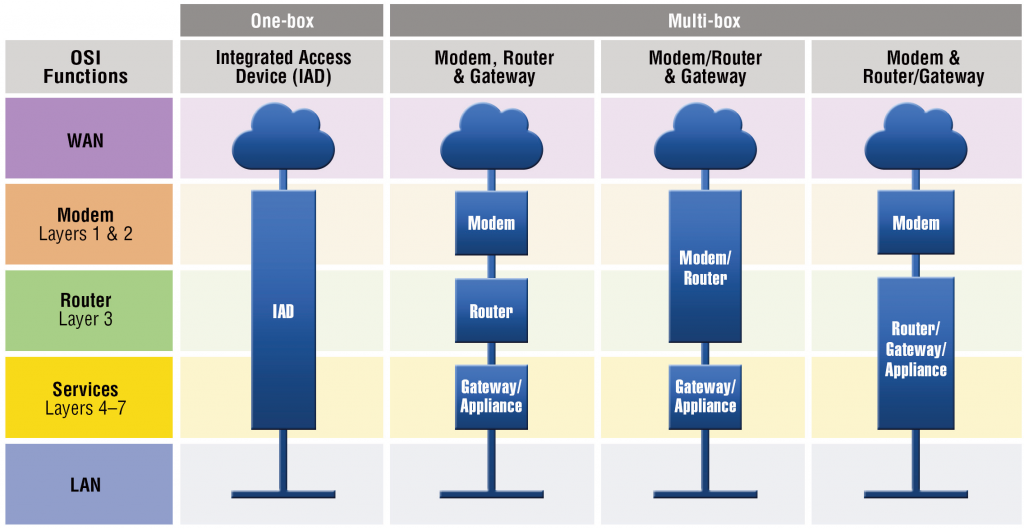The telecom world is going All-IP. Meanwhile, service providers must select network-access technologies—based on price, bandwidth, and geographic
coverage—for their evolving SME offerings. For customer premises equipment, multibox (modem + router + gateway) and single-box (IAD) solutions must be evaluated. So, what are the pros and cons?
Introduction
The telecom world is going All-IP. Such aspects as
service quality, security, and reliability are under
heavy scrutiny. Equipment vendors, service providers
and consultants are developing and promoting solutions
to these open and ever-evolving challenges.
This article explores the topic from the perspective of
service providers making crucial decisions about
physical and functional network architectures on the
customer premises. The available options for this
architecture have a far-reaching impact on the logistics,
flexibility and technological risks of All-IP deployments
as well as the business plan for the venture.

Figure 1: One-Box Versus Multi-Box
CPE architecture options
Figure 1 provides a visual overview of the options for
CPE architecture, shown as a set of schematic diagrams.
There are essentially two basic approaches
to the question of CPE architecture: one-box and
multi-box.
One Box
The one-box solution integrates as many functions as
possible into a single device. Such a device is commonly
known as an Integrated Access Device (IAD).
This means L1/2 transmission technology, L3/4 routing
and security features as well as higher layer service
functions such as media gateways and signaling
are built into the same box.
Multi Box
Multi-box-solutions divide different network functions—
as described by seven layers in the Open
System Interconnection (OSI) model—among separate
devices. The two most common ways to make
that division are:
1. Include a router and transmission modem in one
box, and provide a dedicated VoIP media gateway
or eSBC in a second box.
2. Box one provides a simple transmission
modem (acting as a bridge), while box two
combines Layer-3 routing, QoS and security functions, and media-gateway or eSBC functions.
So, which approach is better? One-box or multibox? From the perspective of logistics, installation and management, the intuitive answer would seem to be “fewer boxes is better.” However, I would say “it depends.” Here’s why….
This article is Part I of a multi-part series. To learn about such decision-making criteria as:
– Market Segmentation—Economies of scale
– Access Technology Trends
watch for PART II…
>>Or you can download the full white paper here. . .
CPE Architecture: When Does All-IP Equal All-in-One?
What do you think?
- Which approach is better for your network applications–one box or multi-box?
Add your thoughts in the comments below…

Looking forward to Part II RAmon!